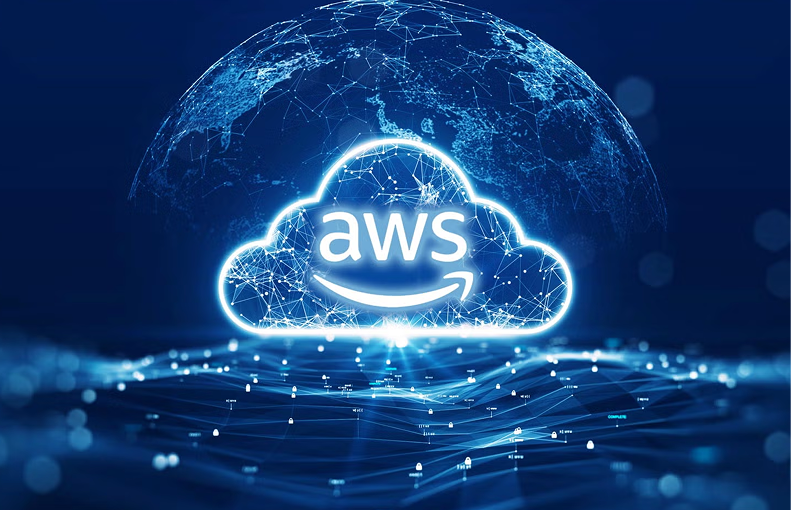Discover the true cost of building a SaaS app on AWS. Learn what factors affect pricing and how to optimise your cloud budget from MVP to scale.
Introduction: Why AWS Costs Aren’t One-Size-Fits-All
Here’s the short answer: it depends. You can build a lean SaaS app on AWS for a lower or higher cost, depending on your needs and requirements. Or, if you’re not paying attention, you can rack up bills that look like phone numbers. AWS is powerful, flexible, and scalable, but that also means it’s easy to underestimate how fast the costs can creep in.
So let’s not pretend there’s one number. Let’s break down where your money goes, what you actually need, and where most people overspend. In this blog, we will be discussing the cost to build a SaaS application and other things!
Where Your Money Goes: Breaking Down SaaS Costs on AWS
When you build a SaaS application on AWS, you’re not paying for “AWS” as one thing. In the way AWS SaaS pricing is structured in a way that you are paying for your services. You are paying for compute, storage, database, security tools and monitoring, each with its own pricing. You choose what to use and how much. The more users you have, the more resources you need. So the costs grow with you.
The three biggest buckets are:
-
- Compute (EC2 or Lambda) – These are your servers, even if you don’t manage them directly.
- Storage (S3, EBS) – Where your files, media, backups, and logs live.
- Database (RDS, DynamoDB, etc.) – Where the real business logic sits.
Then there’s everything else: load balancers, monitoring tools, authentication layers, backups, data transfers. Many of these feel small individually, but can add up quickly when scaled.
What AWS Services Cost When You Build a SaaS
EC2 pricing varies a lot. EC2 is Amazon’s way of saying “rent a server by the hour.” You pick an instance size based on how heavy your app is, and prices vary wildly. A basic t3.micro instance costs less than $10/month. A beefy machine for high traffic can cost hundreds. If you’re not careful, you’ll spin up more power than you need, and it’ll sit there doing nothing while the meter runs.
Lambda, AWS’s serverless offering, works differently. You’re charged based on how often your function runs and how long it takes. It’s great for light usage, workflows, or background jobs. Many newer apps use a mix of EC2 and Lambda, so you would have to look at both AWS S3 and Lambda pricing.
If you’re still in the MVP stage, stay small. One small EC2 instance and some Lambda functions can keep your computer costs under $50/month.
-
Storage: S3, EBS, and Hidden Traps
S3 is where you store files. The AWS storage cost is cheap and reliable. It starts at about $0.023 per GB. But here’s what people miss: storage isn’t just about saving. It’s about retrieval, too. If your users upload large files, stream video, or frequently download documents, you’ll pay for the bandwidth too.
EBS is block storage attached to EC2 instances. Think of it like a hard drive. It’s more expensive than S3, but it’s also faster and more flexible. You use EBS if your app needs fast access to structured data.
The trap? Leaving old snapshots and unused volumes sitting around. Check your backups and clear them regularly. It’s easy to lose $100/month to forgotten storage.
-
Databases: RDS and DynamoDB
AWS Database pricing comes with two main choices here. RDS (for SQL databases like MySQL or PostgreSQL) or DynamoDB (for NoSQL setups). RDS charges by instance size and storage. A small RDS instance might cost around $30–40/month. Add backups, failover, and replication, and you’re pushing $100+ fast.
DynamoDB charges by read/write units and storage. It’s great for apps with unpredictable traffic. It’s also surprisingly cheap if tuned properly, but costs can spike if your usage jumps and you haven’t set any limits.
Don’t skip monitoring here. Your database is the heartbeat of your SaaS. If it gets overloaded, your app goes down.
Looking for something
Hire AWS Developers
Different businesses require different software application development skills to handle their significant projects.
Hire AWS Developers
Picking the Right AWS Pricing Model for Your Stage
AWS has three ways to pay.
- On-demand: Pay as you go. No commitment. Easy to start with.
- Reserved instances: Commit to one or three years, and you’ll pay less overall.
- Spot instances: Cheapest, but unreliable. If AWS needs the resources, they’ll cut you off.
For early-stage SaaS, on-demand is fine. Once you know your traffic and if you are thinking of scaling a SaaS application on AWS, switch to reserved. It’ll save you a lot in the long run.
Other Costs You Might Not Expect
There are always “other” costs. Here are some that catch people off guard:
- Data transfer: Moving data out of AWS (especially to the public internet) costs money.
- Route 53: Domain and DNS management. Not expensive, but still a line item.
- CloudWatch and CloudTrail: Logging and monitoring. A free tier exists, but it runs out fast.
- Elastic Load Balancer: Necessary if you want to handle high traffic, but it adds a monthly cost.
None of these breaks the bank. But together, they can turn a $200/month setup into $400 without warning.
Security and Compliance Costs for SaaS on AWS
Security costs are real. If you’re handling user data, you’ll need encryption, access management, and backups. AWS offers tools like IAM, KMS, and GuardDuty. Some are free for basic use. Others charge based on volume or time.
If you’re in finance, healthcare, or handling any sensitive data, you’ll probably need to meet compliance standards like SOC 2 or HIPAA. That adds more layers and more cost. Even if AWS gives you the tools, configuration, and monitoring are still on you. So, you will need some expertise to understand cost optimisation for SaaS on AWS.
Common Mistakes and Cost Traps in Building a SaaS Application on AWS
- The most common mistake is not checking what’s running. People spin up EC2 instances, run tests, then forget to shut them down. Or they leave CloudWatch logs running at full detail for months. Or they store every version of every file just in case.
- Underusing reserved instances. If you know your app is sticking around, stop paying full price for on-demand computers.
- Ignoring data transfer. Especially if you serve lots of media. The cost of moving data out of AWS can be more than the cost of storing it.
Best Practices for Cost-Effective SaaS Development on AWS
If you’re building a simple SaaS app with a few hundred users, here’s a rough baseline or an AWS SaaS calculator you can use:
- EC2 (1–2 instances): $30–60
- RDS: $30
- S3 storage: $5–10
- Lambda: $1–5
- Misc (monitoring, auth, traffic): $10–20
That puts you around $100–150/month. As you grow, double it. Then double it again, and once traffic hits a certain point, you’ll need to restructure for scale, and that’s where real AWS cost management starts.
Conclusion
Building a SaaS product on AWS doesn’t have to be expensive. But it’s also not automatically cheap. The platform is built for flexibility, not simplicity. You’re given a blank canvas and asked to paint carefully, with full control over how you scale your application. If you plan early, monitor often, and trim the fat, cost optimisation for SaaS on AWS becomes manageable. But if you ignore what’s running and hope it works out, AWS will quietly drain your budget behind your back. Build small. Track everything. Learn how your app behaves. That’s how you avoid surprise bills and build something sustainable.
Still unsure where to begin? Our AWS Consulting Services can help you map out a cost-efficient, scalable infrastructure tailored to your SaaS goals.

Gaurang Joshi
Lead DevOps Engineer
Lead DevOps Engineer
